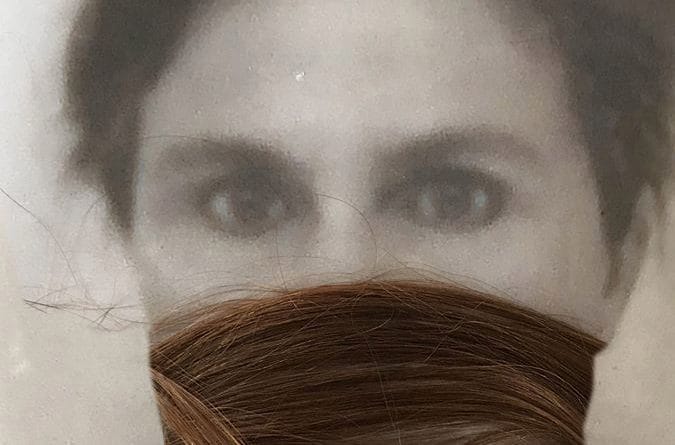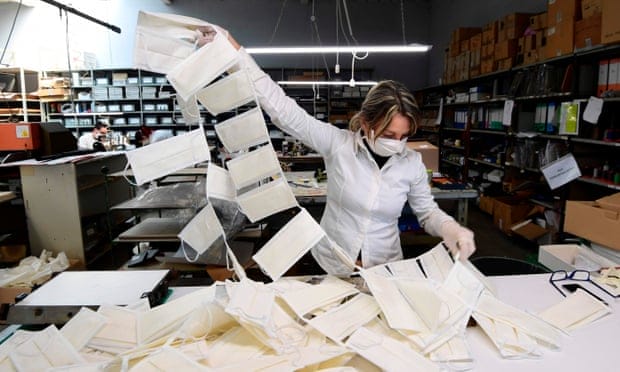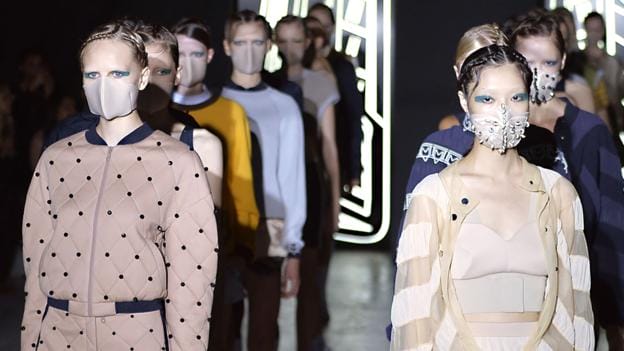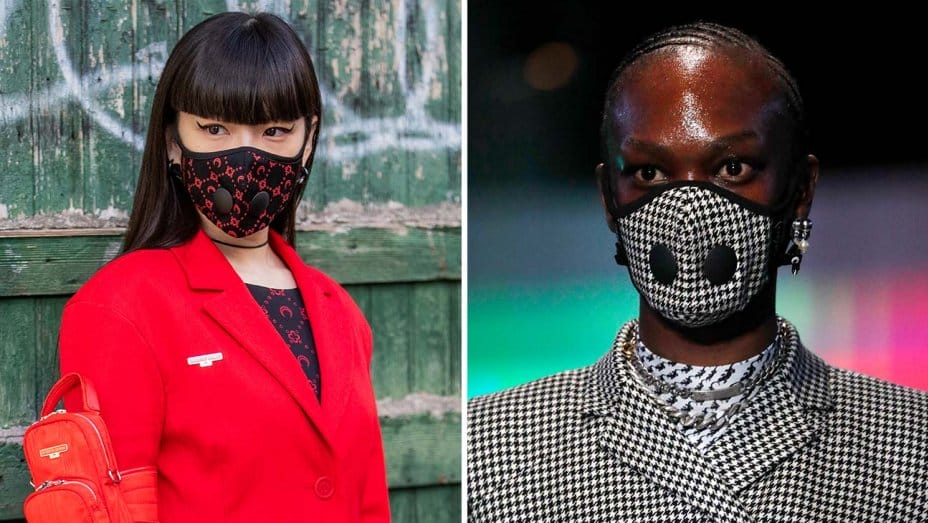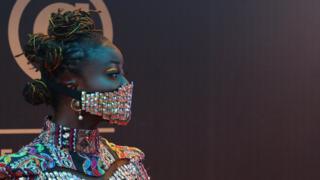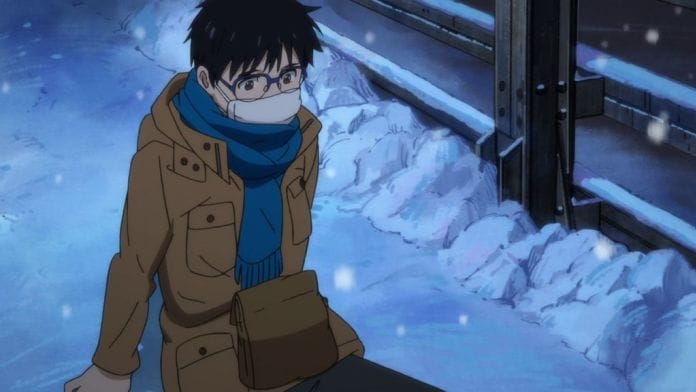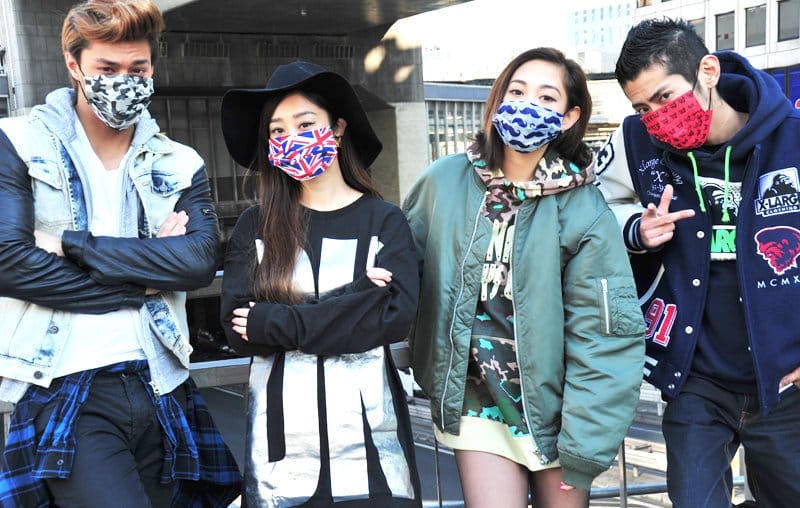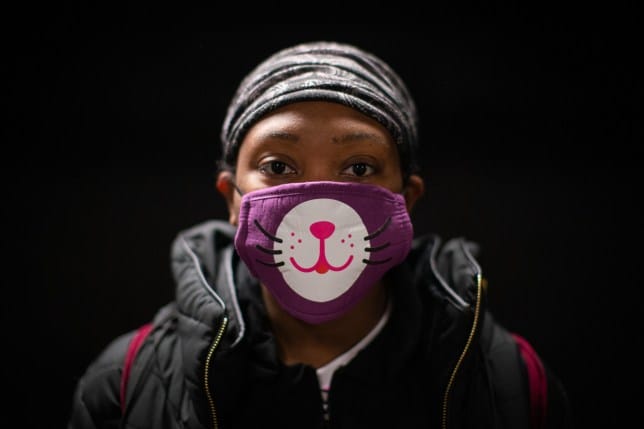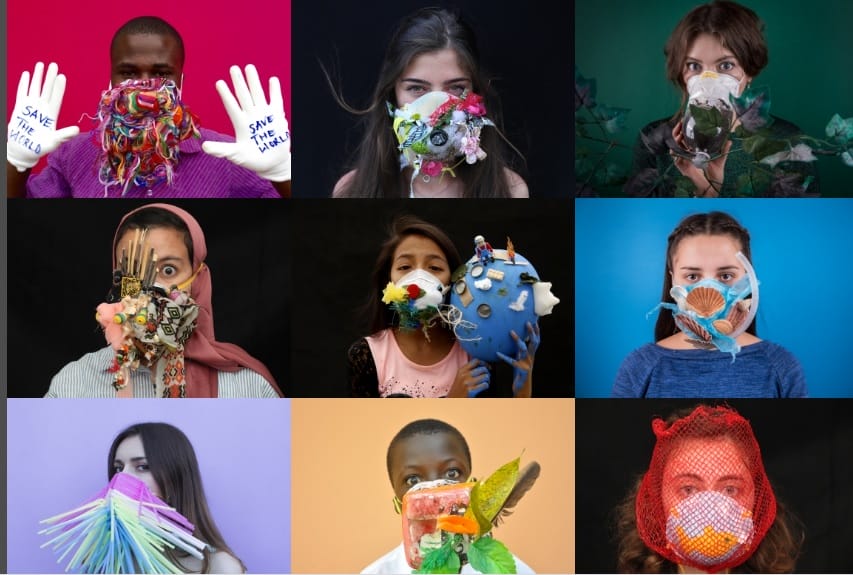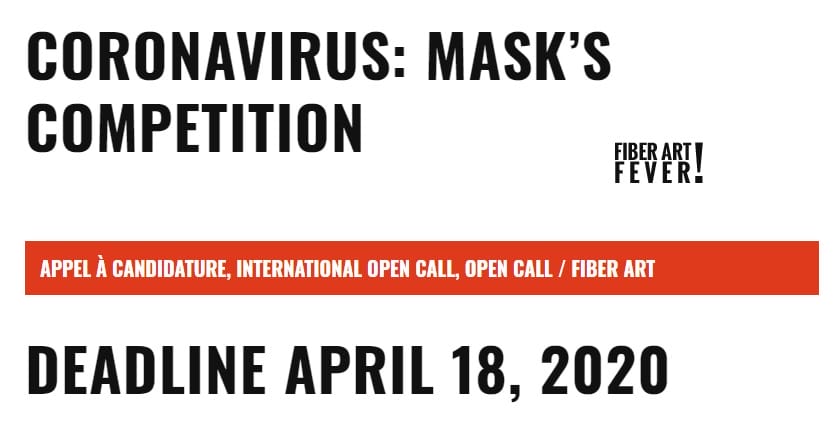Covid-19 emergency, art and fashion to raise awareness and be testimony
translation by Marina Dlacic
This is a difficult time. We are at a minimum upset and in shock. The awareness of the world-wide problem occurred slowly. Amazed and incredulous, we became aware of the terrible danger. Isolation is the only truly effective weapon. Even the last countries reluctant to individual and economic restrictions have taken these steps. Everyone is at home, observing rules and precautions, waiting for good news on the progress of the pandemic. Death and pain. Fear. Everything is crystallized.
The emergency, precisely because it was so, found us unprepared. One of the most important precautionary measures is the use of masks. Which we don’t have. Not to this extent. Health cuts in recent years leave us without this protection, not only for personal use, but also dangerously in hospital facilities. And for all those categories of workers who cannot stop their service.
What now? Everyone is busy. Anyone who knows how to sew follows the instructions of the various tutorials on YouTube or similar sites and sews. Sews for himself and for others, in a solidarity competition that not only involves individuals but also textile industries and craftsmen at all levels. And so here are Prada, Balenciaga, Gucci, Saint Laurent, Armani, Ermanno Scervino, Les Copains, among the best known, and still brands such as Zara and Mango. I am sure I forget many of them and there are new ones every day.
Alongside these charitable initiatives there are also other aspects that the world of art and fashion could not fail to interpret.
For some time now, fashion had proposed fashion masks for an elitist market. In the last fashion shows, masks made of precious fabrics or combined with clothes had made their appearance.
Fashion shows before the Covid-19, when smog was the problem…
Models and actresses in full emergency COVID 19
But fashion affects not only the catwalks: in Japan the use of masks for hygiene, prevention and filter not only for bacteria but also for pollution, goes back ten years. It is considered a form of respect for oneself and for others. Initially they were used out of necessity and with embarrassment but in 2003 rittai masuku were launched on the market, no longer disposable but in washable material and with more captivating patterns and shapes.
Now it will no longer be a phenomenon limited to the land of the rising sun. In the big cities all over the world all types of protective masks are being made, handcrafted but also coming from the ateliers of the younger designers.
Ragazzi con la mascherina fotografati a NewYork
In this context, the art world takes on a role of denunciation. In recent years, provocative masks linked to the problem of air pollution had already been created by the most committed social and civil artists.
Tired of feeling helpless in the face of the toxic plague of air pollution in China, the Beijing-based artist Wen Fang decided to tackle the problem in the only way she knew: through her art. Two years later, her photographic project ‘‘Maskbook’ became a collaborative global work of art
Mask book – Wen Fang
Also absolutely provocative is the project by the German-Namibian artist Max Siedentopf, entitled How To Survive A Deadly Global Virus; it suggests a variety of objects that could be used as alternatives to face masks. It is obviously a protest about the impossibility of finding protective face masks
Now, in addition to provocation, there is the value of testimony. The historical moment that art cannot fail to face.
4 of the 12 images of Max Siedentopf‘s project, entitled How To Survive A Deadly Global Virus
There are also those who feel the need to defuse, not for lightness and superficiality but almost to exorcise fear. In this regard, we would like to point out an interesting competition organized by Fiber Art Fever: all the most raving, poetic and creative coronavirus protective masks will be published in an album on the Facebook page, with the name of the author. In addition, three masks will be awarded with a one-year subscription to the magazine that launched the competition.
International mask’s competition about coronavirus for fiber artists – DEADLINE APRIL 4, 2020
Send photos of the masks with a private message on the Facebook page or via email fibreartfever@gmail.com with the title “coronavirus mask”
